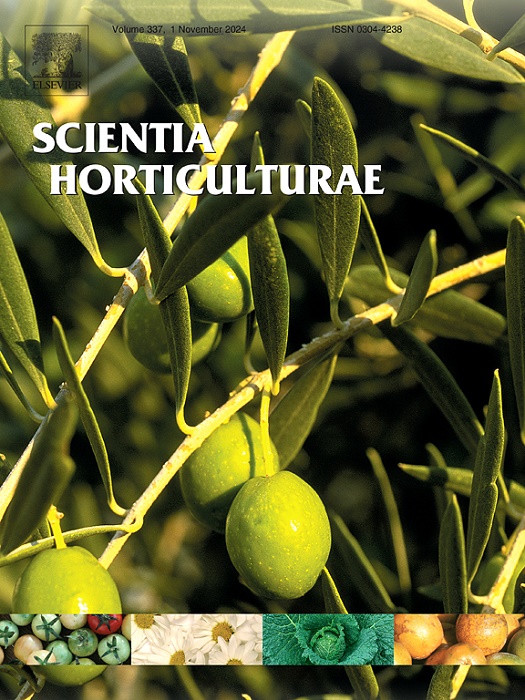基于计算机视觉的玫瑰切花花瓣损伤和弯花检测方法
IF 3.9
2区 农林科学
Q1 HORTICULTURE
引用次数: 0
摘要
采后品质分级对进一步提高切花玫瑰的市场竞争力起着至关重要的作用。采收后切花分级的关键任务之一是缺陷检测。本研究提出了一种基于深度学习技术的玫瑰切花损伤识别方法。该方法首先建立了切花图像采集系统,建立了花瓣损伤数据集和弯头花数据集。对于花瓣损伤,本研究对YOLOv5模型进行了轻量化改进,使用改进后的YOLOv5模型识别花瓣损伤,APobj达到92.1%。与其他模型相比,改进的YOLOv5模型也具有较好的精度和较少的参数。对于弯曲的花,本研究对HRNet模型进行了轻量级改进,并使用改进后的HRNet来识别花的中心位置。改进后的HRNet在识别精度上有所下降,但与原始模型相比,参数数量明显减少。在获得花的中心位置后,根据训练集数据得到的最佳距离阈值判断是否为弯花。最终玫瑰切花的平均损伤识别准确率为97.9%。综上所述,本研究提出的方法可以有效地识别切花玫瑰花瓣损伤和弯花,也可以为切花玫瑰的质量检测提供新的思路和技术手段。本文章由计算机程序翻译,如有差异,请以英文原文为准。
Petal damage and bent flower detection method of rose cut flowers based on computer vision
Post-harvest quality grading plays a crucial role in further enhancing the market competitiveness of cut roses. One of the key tasks of post-harvest cut flower grading is defect detection. This study proposes a method for identifying rose cut flower damage based on deep learning technology. This method first sets up a cut flower image acquisition system and establishes a petal damage dataset and a bent head flower dataset. For petal damage, this study makes lightweight improvements to the YOLOv5 model and uses the improved YOLOv5 model to identify petal damage, achieving an A P o b j
求助全文
通过发布文献求助,成功后即可免费获取论文全文。
去求助
来源期刊

Scientia Horticulturae
农林科学-园艺
CiteScore
8.60
自引率
4.70%
发文量
796
审稿时长
47 days
期刊介绍:
Scientia Horticulturae is an international journal publishing research related to horticultural crops. Articles in the journal deal with open or protected production of vegetables, fruits, edible fungi and ornamentals under temperate, subtropical and tropical conditions. Papers in related areas (biochemistry, micropropagation, soil science, plant breeding, plant physiology, phytopathology, etc.) are considered, if they contain information of direct significance to horticulture. Papers on the technical aspects of horticulture (engineering, crop processing, storage, transport etc.) are accepted for publication only if they relate directly to the living product. In the case of plantation crops, those yielding a product that may be used fresh (e.g. tropical vegetables, citrus, bananas, and other fruits) will be considered, while those papers describing the processing of the product (e.g. rubber, tobacco, and quinine) will not. The scope of the journal includes all horticultural crops but does not include speciality crops such as, medicinal crops or forestry crops, such as bamboo. Basic molecular studies without any direct application in horticulture will not be considered for this journal.
 求助内容:
求助内容: 应助结果提醒方式:
应助结果提醒方式:


